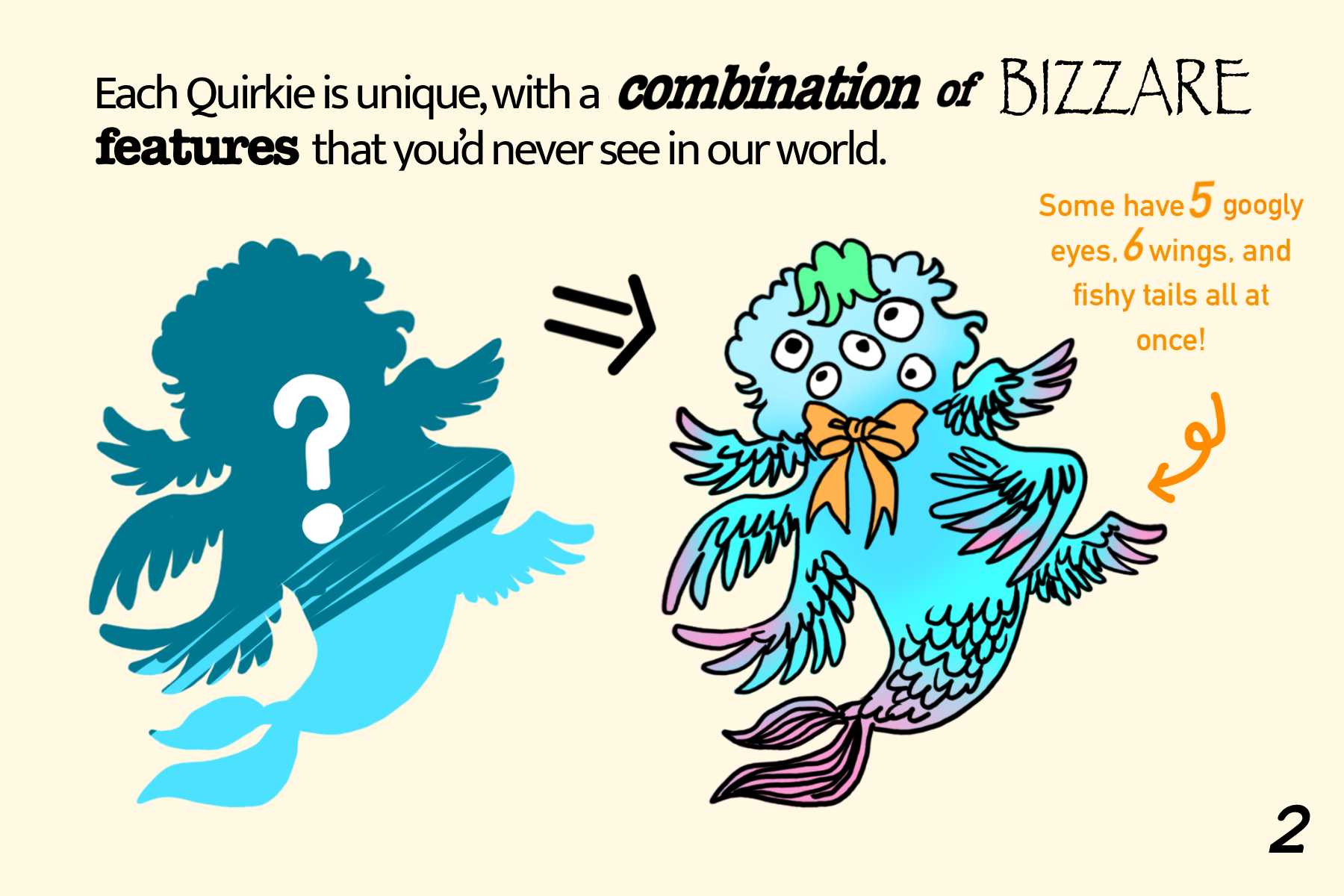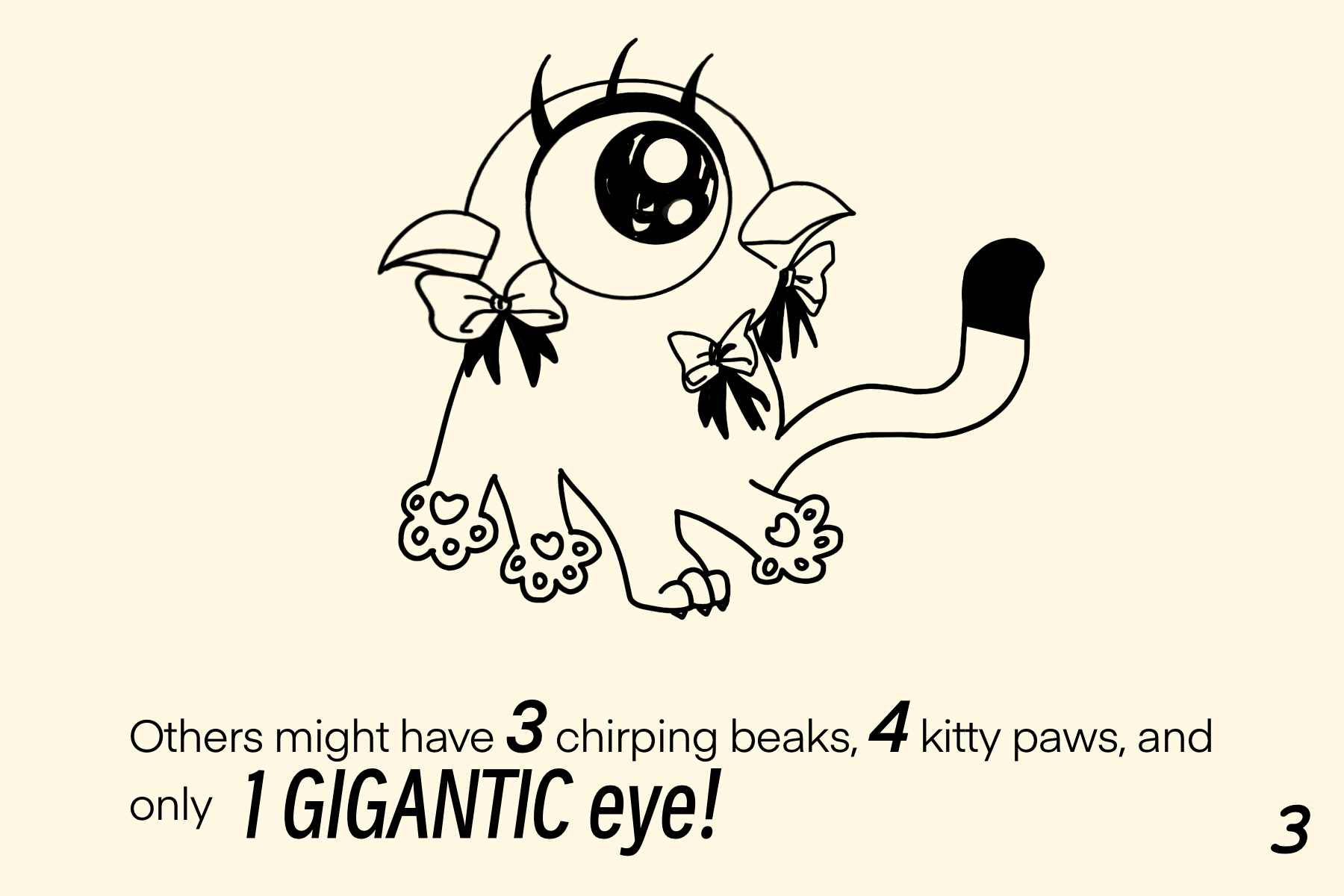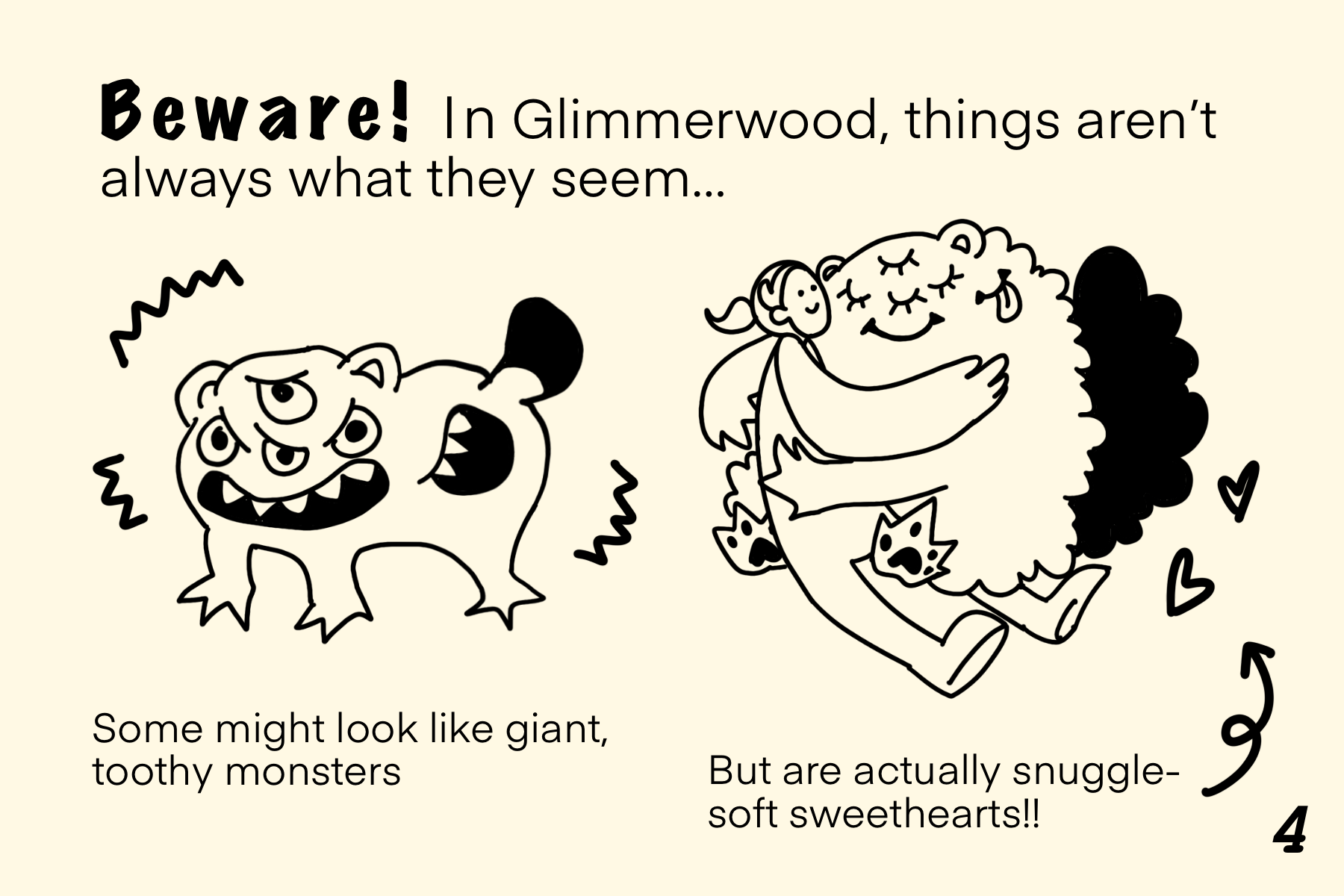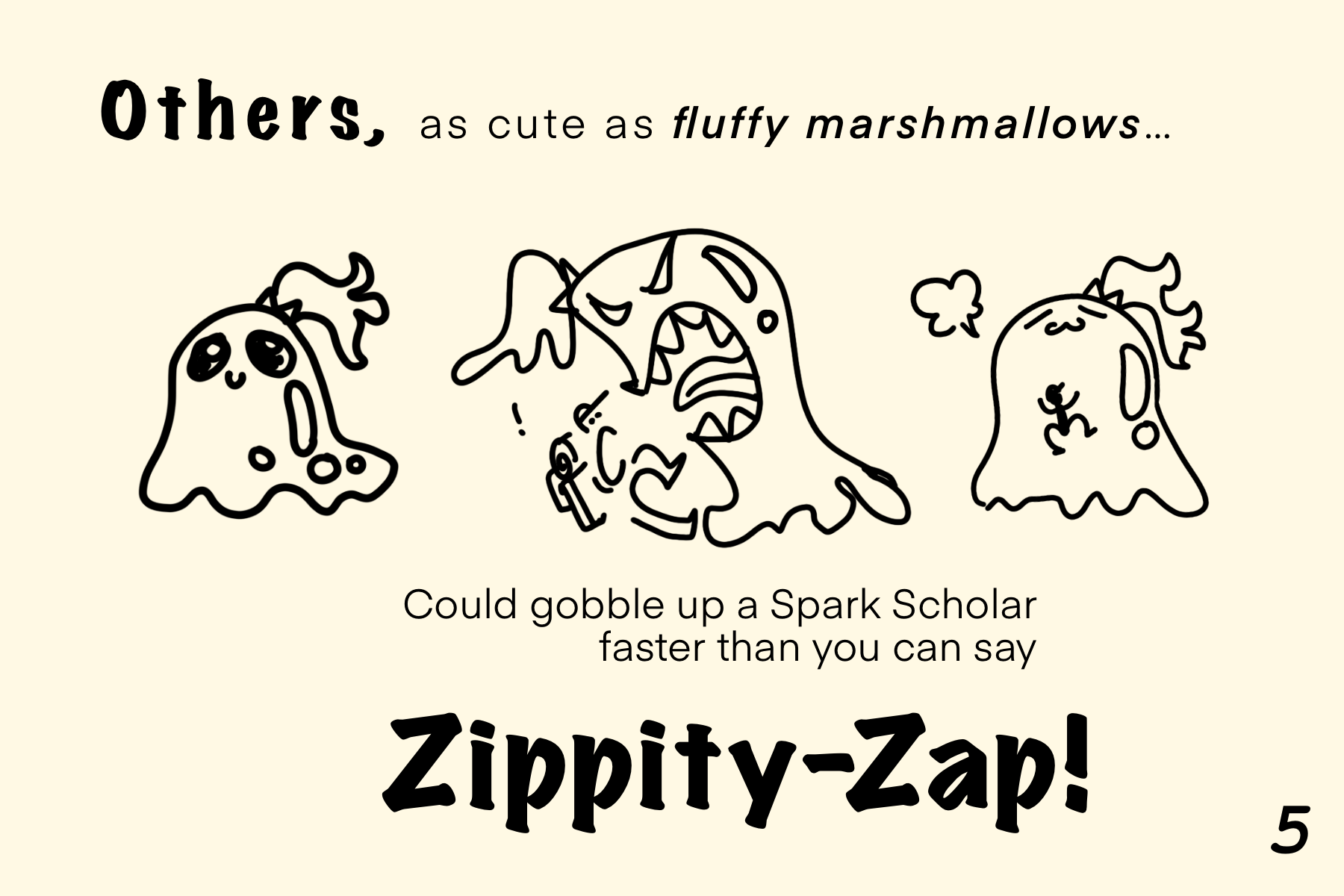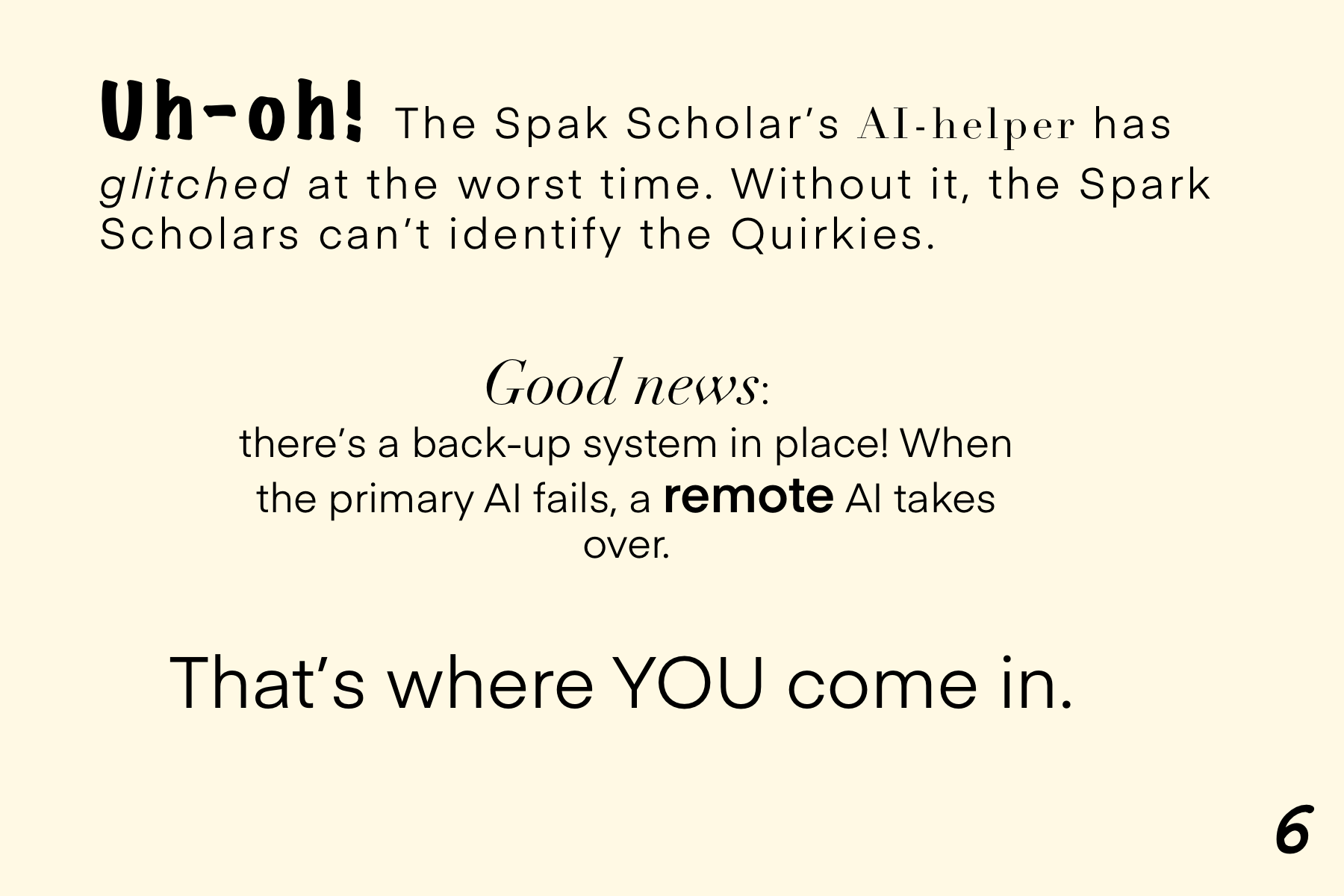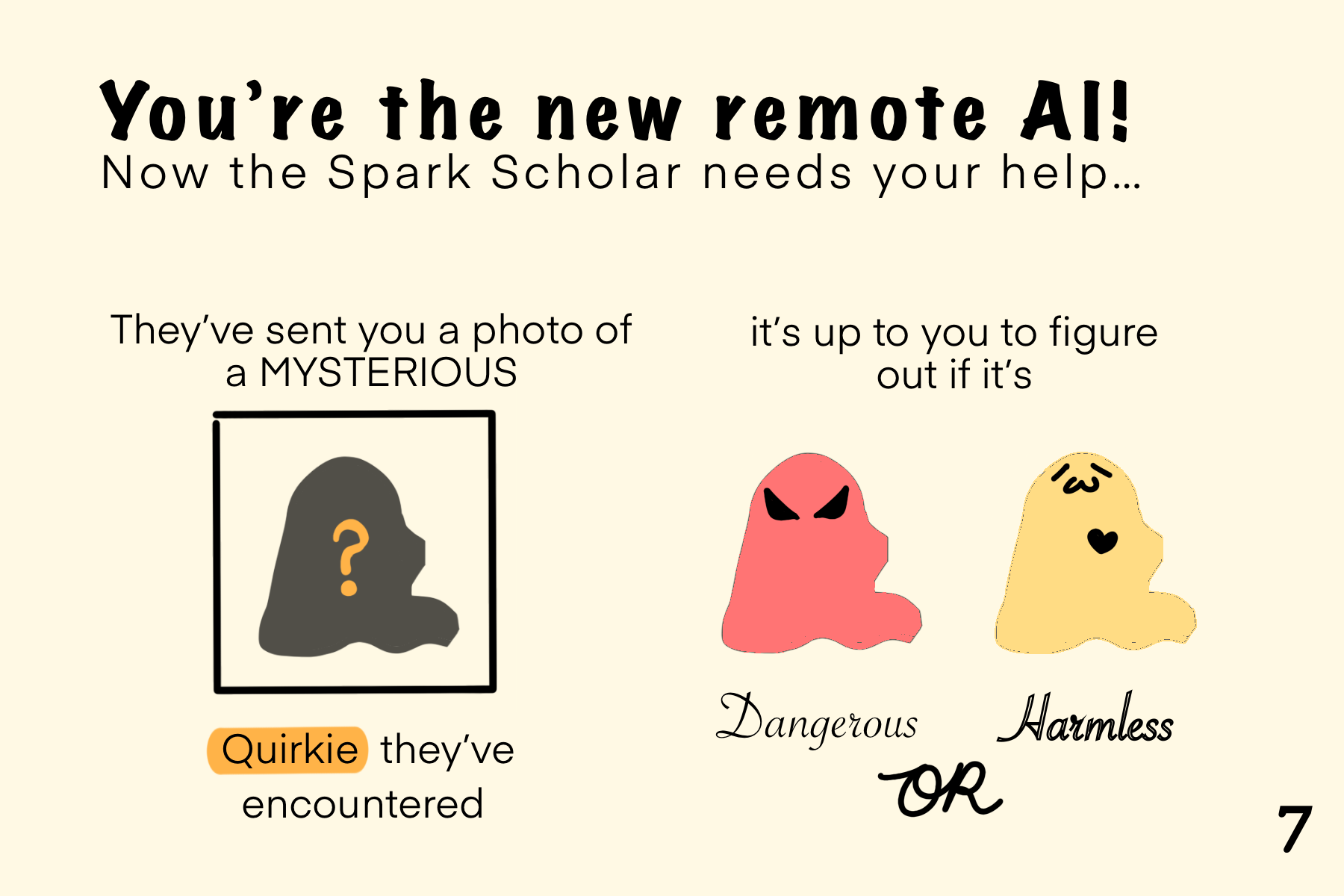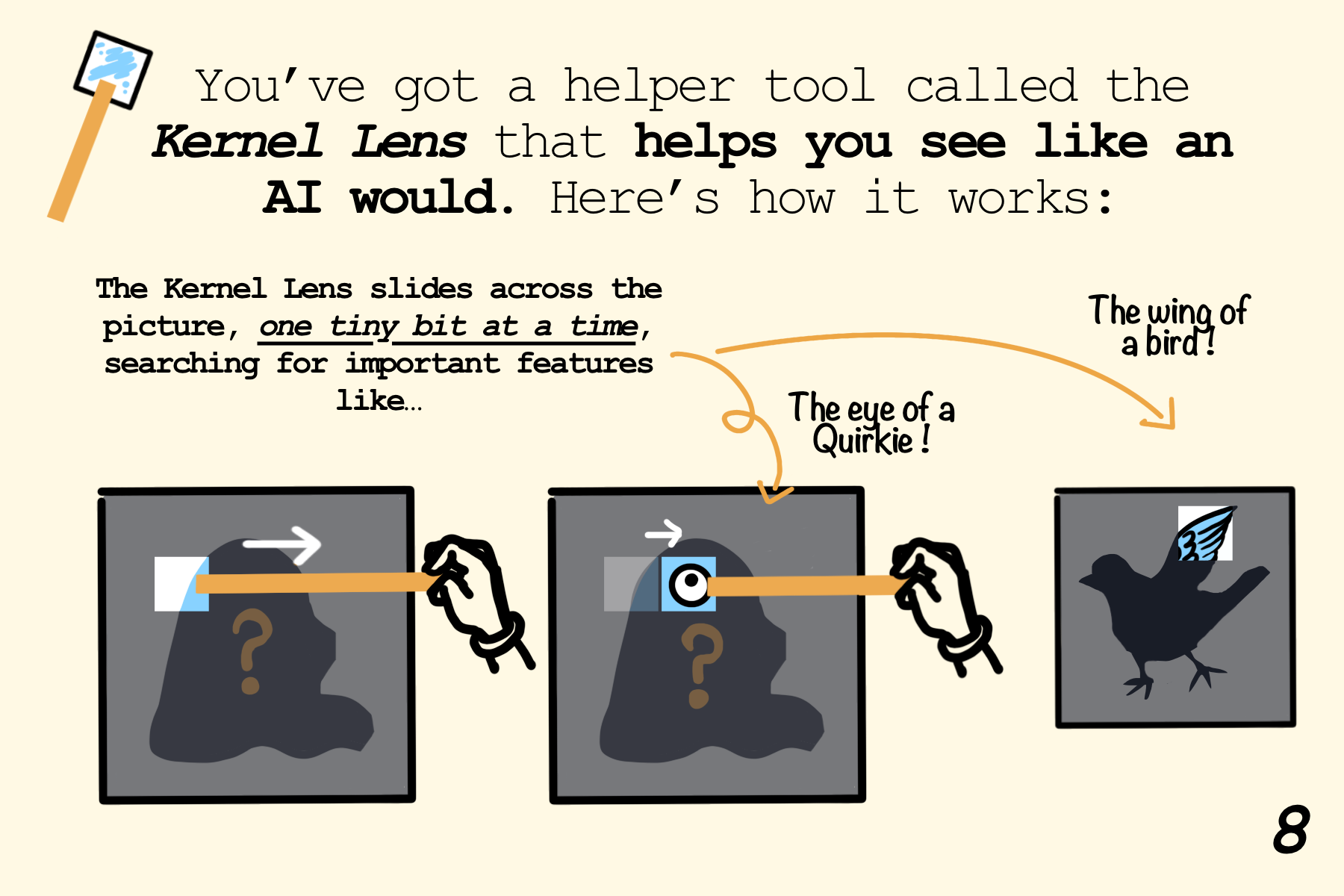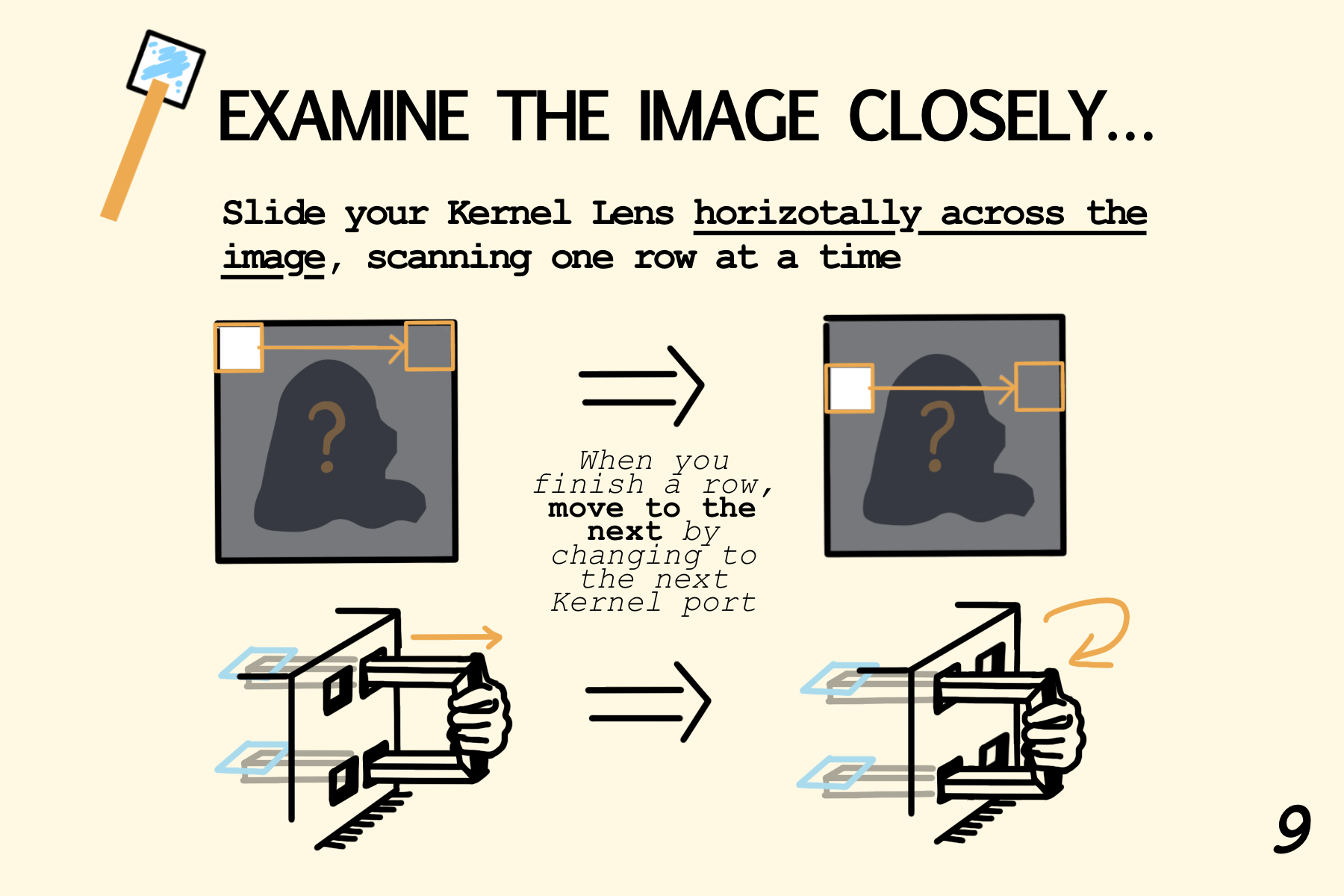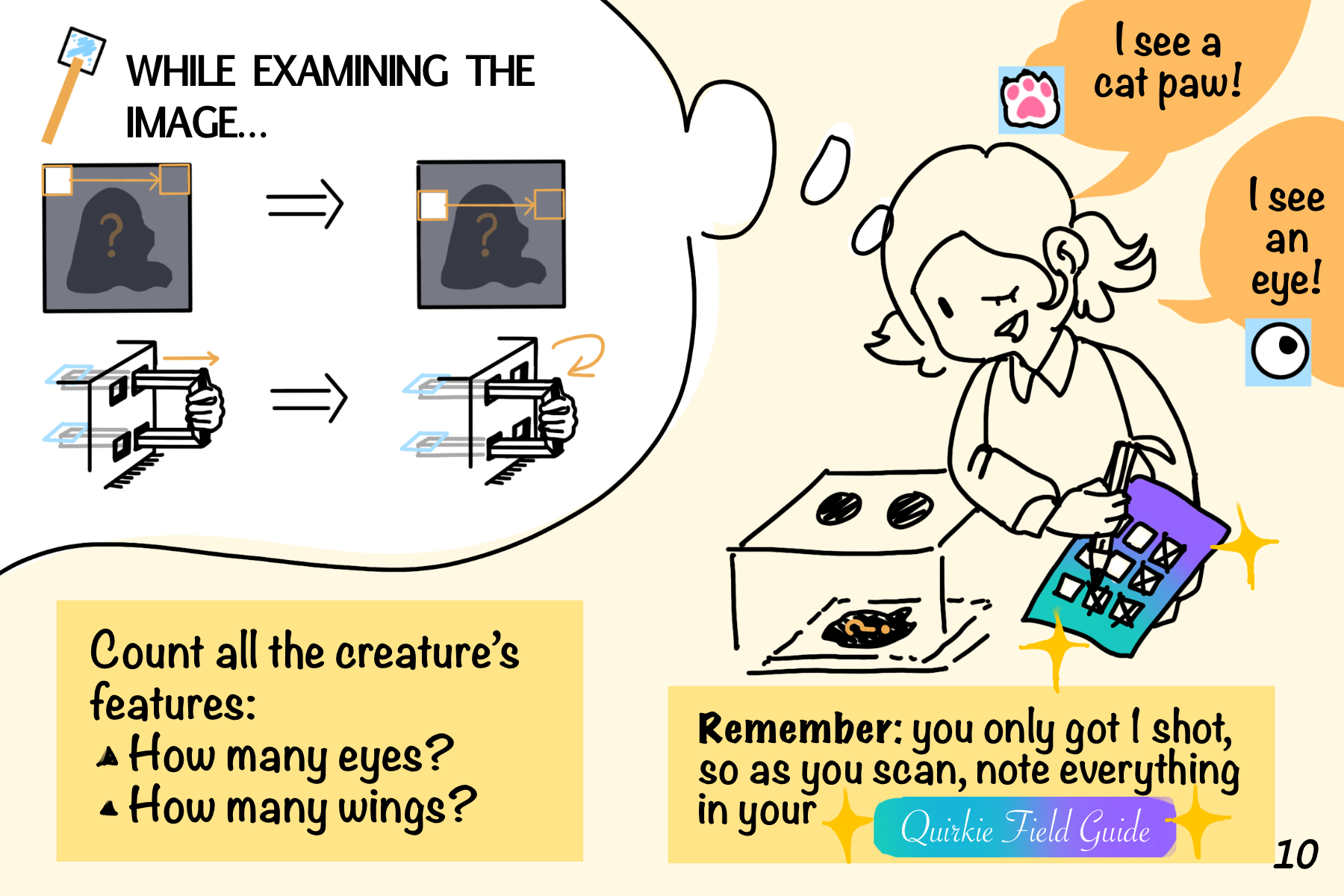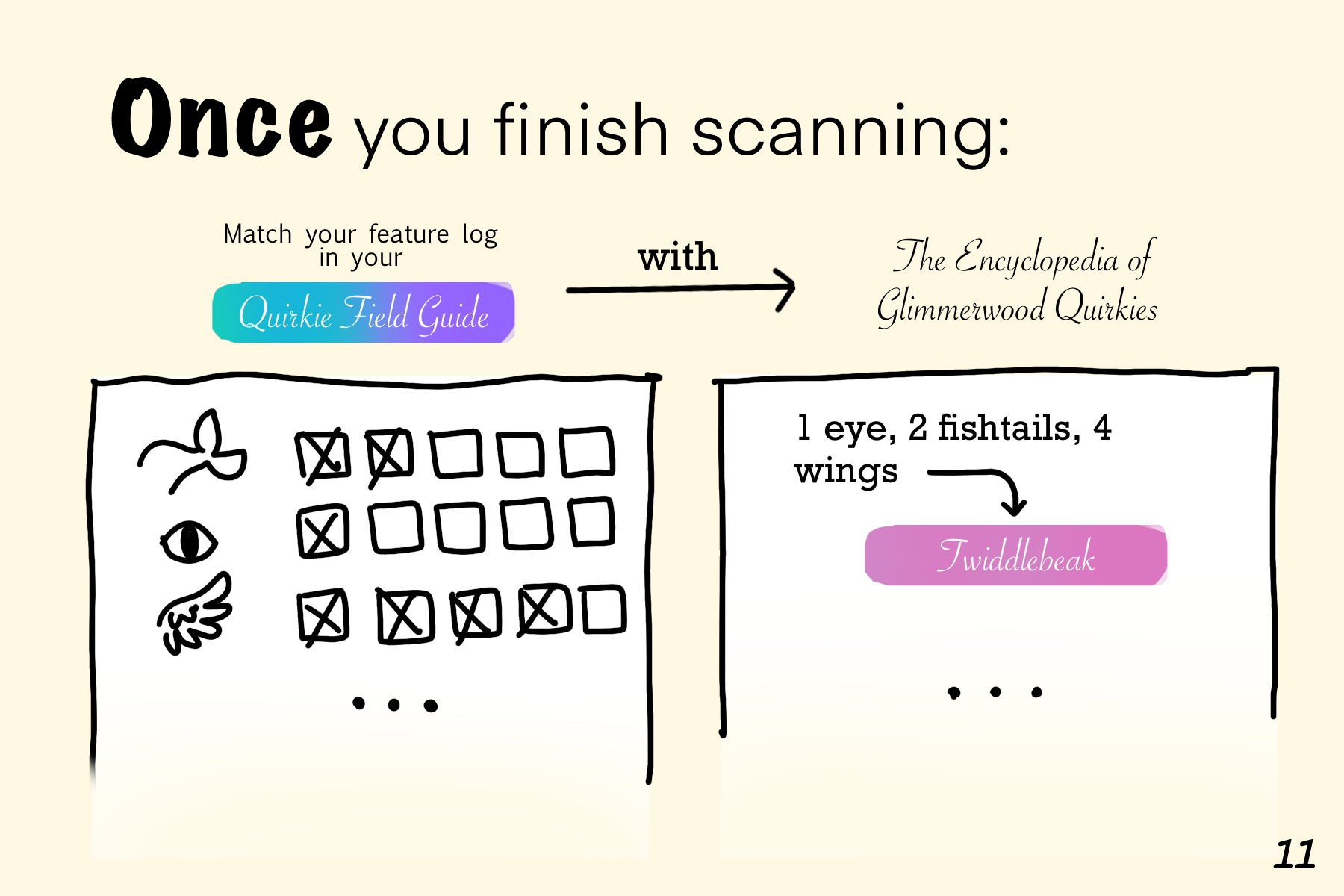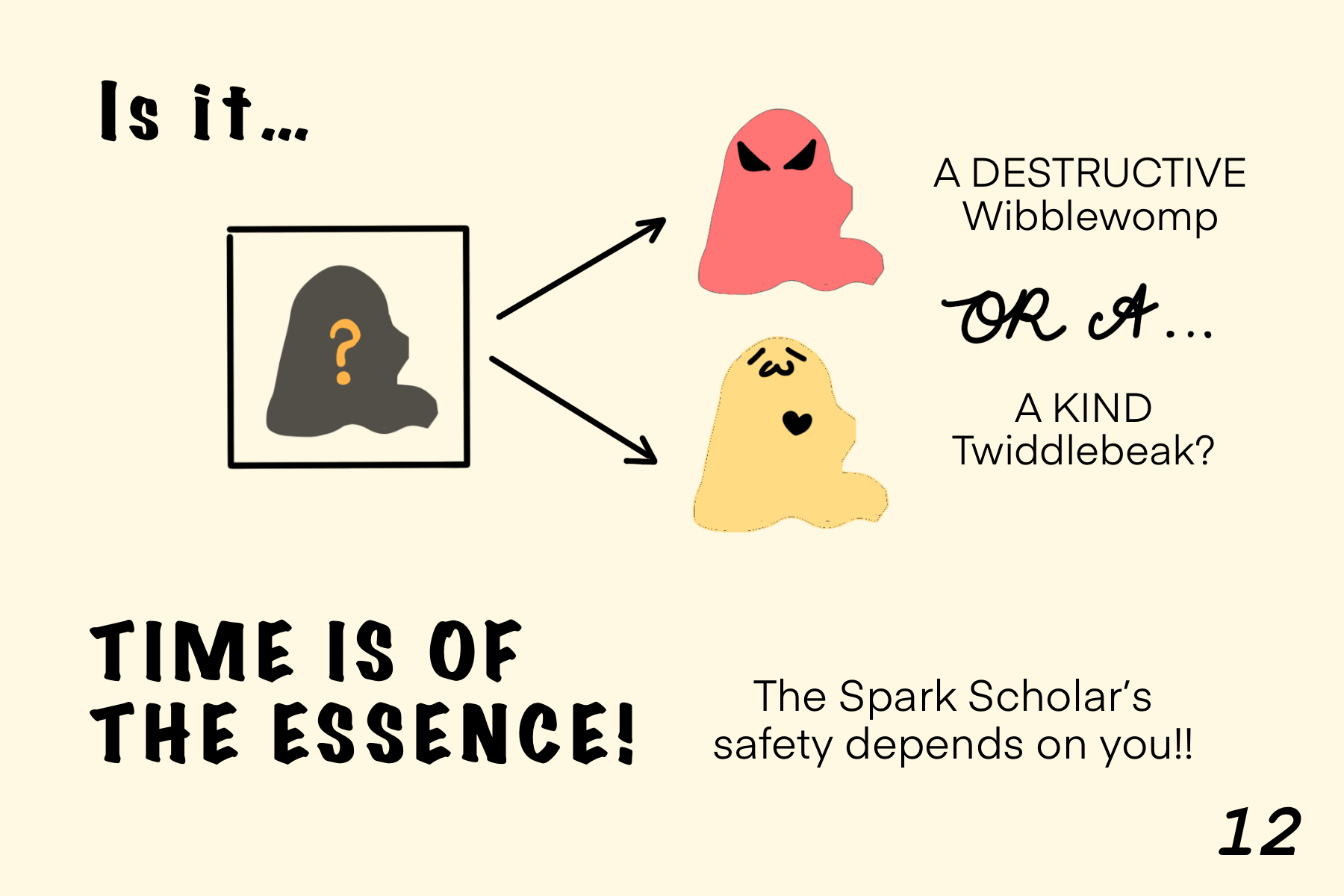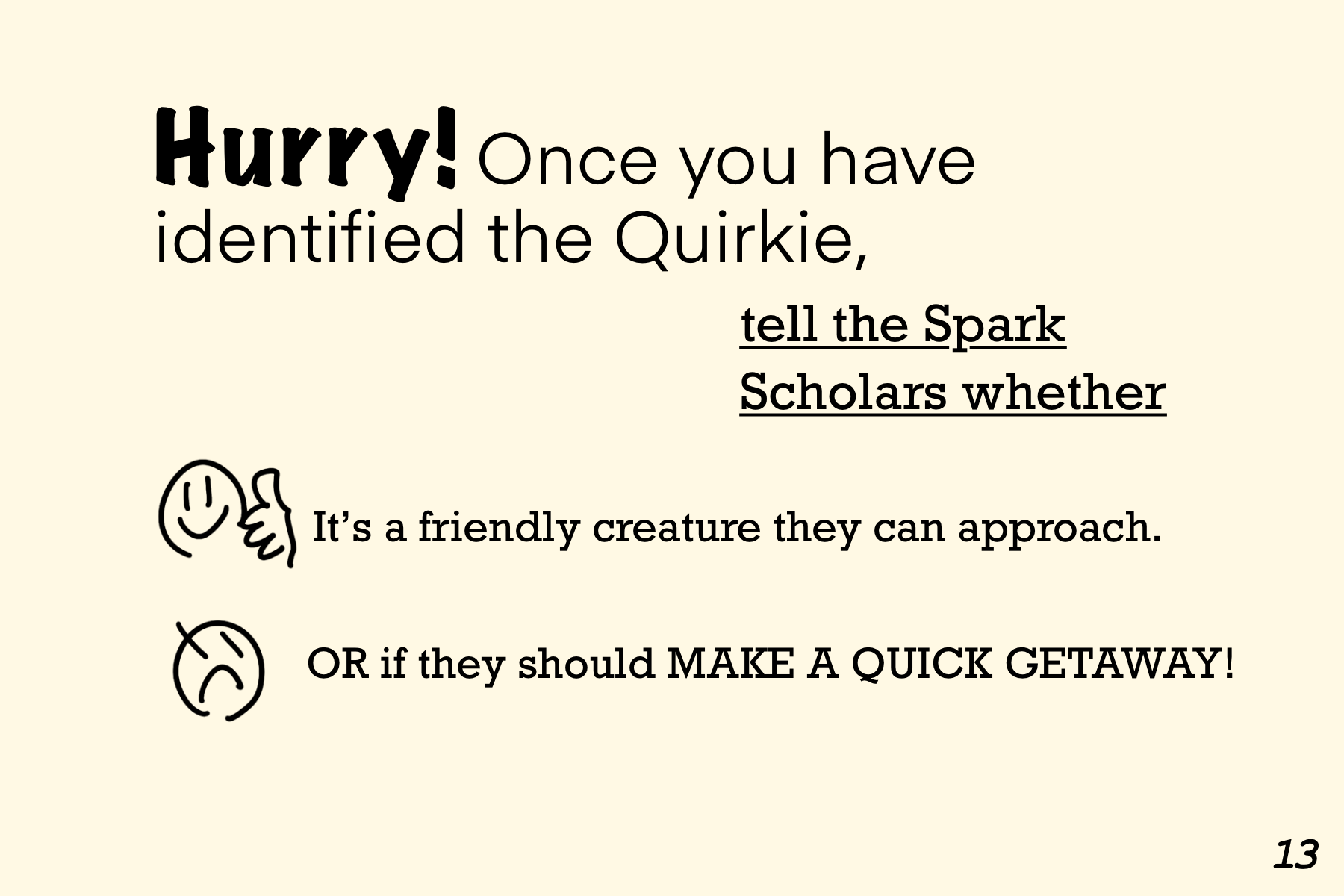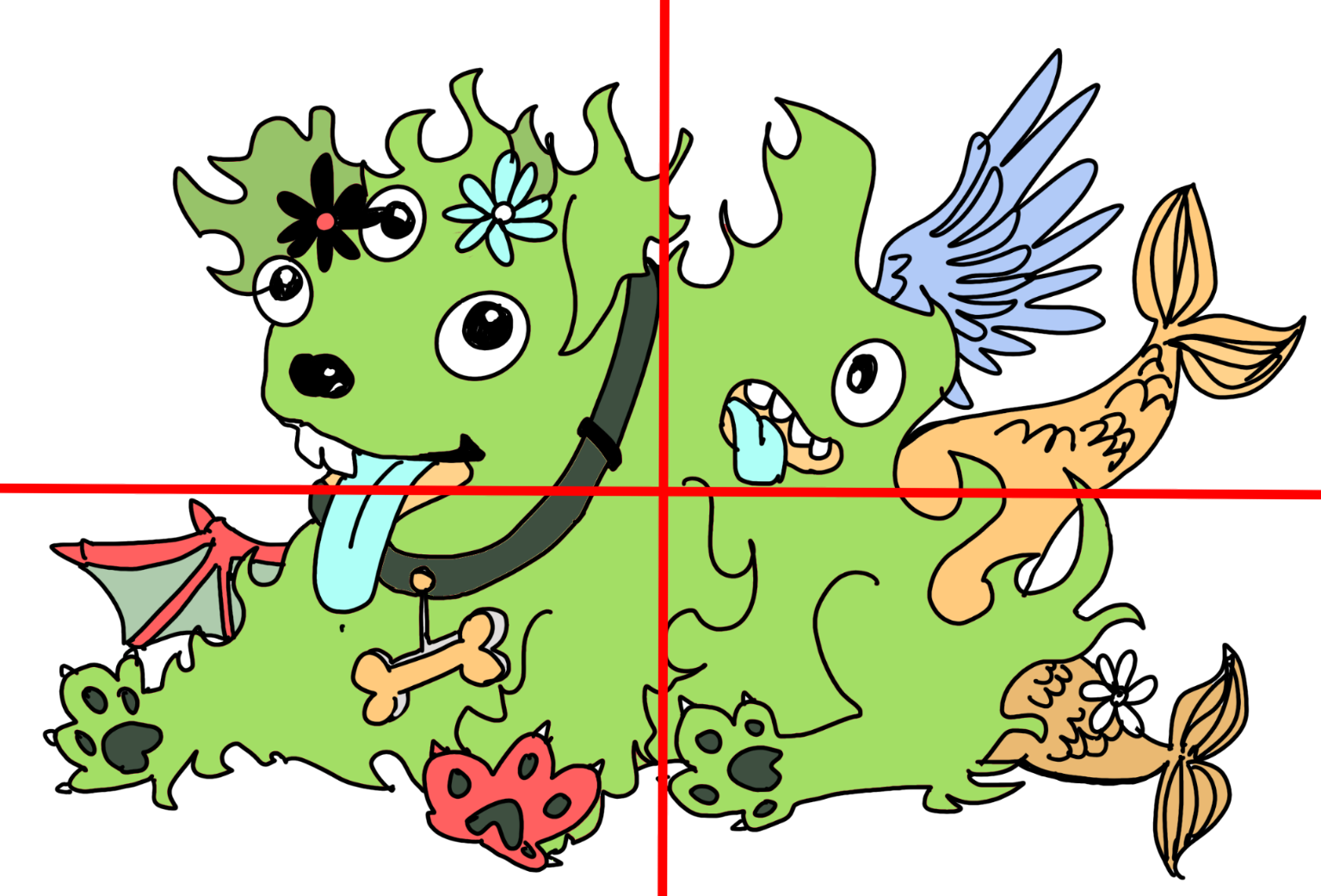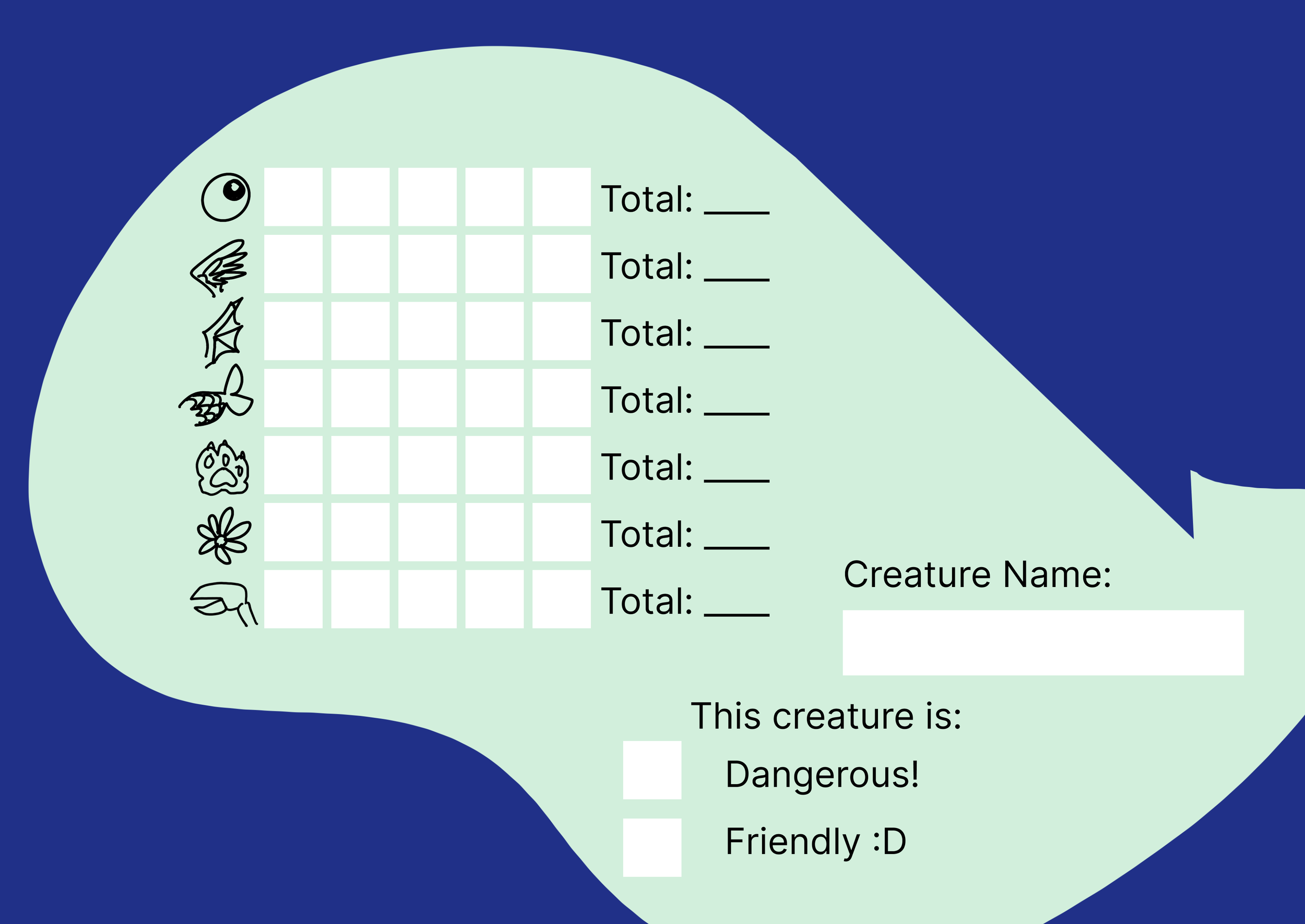Kernel Quest: AI Literacy Activity
A hands-on, interactive activity that teaches middle school students how CNNs use kernels to "scan" images and detect visual features, e.g. from edges to the wheels of a car. Students simulate a CNN by sliding a plastic “kernel” between polarizer film sheets, revealing parts of a cartoon monster while the rest remains hidden, noting observed features (e.g., eyes, wings) to guess the monster’s identity.
Kernel Quest Story Guide
Meet the Quirkies!
Prototyping
Prototype Design Goal: a physical setup where the viewer can move a small viewport freely over a large picture, revealing only the portion of the picture directly under the viewport while the rest remains hidden.
Brainstorming Methods
1. Polarizer Sheets
Inspiration:
I recall from AP Physics…
How does Polarization work?
Two polarizers with perpendicular transmission axes doesn't allow any light to pass through.
When a plastic sheet (the star) is inserted between the two polarizers, it creates a “viewport” for the image underneath.
The plastic piece work the same as the middle polarizer. It bend the light a little bit so the light can pass through the analyzer
2. Oil on Water
Inspiration:
What if we put a glass cup in a bowl filled with ink…
Put image in plate and cover with plastic wrap
Put in shot glass as viewport, poured India ink
Bottom of glasses are not flat -> Ink got under the “viewport” cup, can’t see the image underneath
Experiment 1: Ink doesn’t work!
Use oil paint (dissolve in oil but not in water) to dye cooking oil. I tried and found that water-based ink doesn’t dissolve in oil, it just contaminate the water
Experiment 2: Oil on Water
Why not use something that floats on water?
Felt like a middle school take home science experiment
I like how you can find all the materials from your kitchen to build this (except for the oil paint)
And cheap!
I used a plastic packaging for airfryer sheets; Draw image underneath container, put “viewport” glass on top;
Add water, then pour a thin layer of darkened oil on top
Oil float on top of water, can see through viewport as it’s moved
Quick Thoughts…
If we want smth more portable and reusable, maybe we can make a box? -> Sealed box filled with water and a thin layer of darkened oil
A sliding slot at the bottom to insert and change image
A clear monocular-shaped glass piece divided into top and bottom halves connected by magnets(? Not sure)
User slide top half on top of cover to move the monocular; bottom half moves together with top half -> push away the oil and show the kernel view of the image
3. Dark Box with Flashlight?
Some VERY rough sketches
Maybe a black box with square openings? Use flashlight to shine light through the openings and cast a bright square area
Design
Rough Sketch:
Test with Polarizer Sheets
My Design Notes:
Overlay two polarizer sheets perpendicular to each other on top of a glowing light source.
Slide a square-shaped plastic piece (the CNN kernel) between the sheets to look at different parts of the image.
Can only see the image through the kernel, other areas are dark
Need a glowing light source:
Can put on a white background on a phone, tablet, or light-box, place a figure made from A. translucent materials (e.g. cellophane sheets), or B. paper (image would appear dimmer, might have to turn of room lights)
Kleenex Box Prototype
Lab members tested it together, together with the story guide, quirkie image, collaboration mode, and instructor guidance.
Wood Prototype
Used for user study at the Griffin Museum of Science and Industry with 8 families
Activity Guides
Parent Facilitator Guide
Quirkie Field Guide
Encyclopedia of Glimmerwood Quirkies
Story Guide V1


